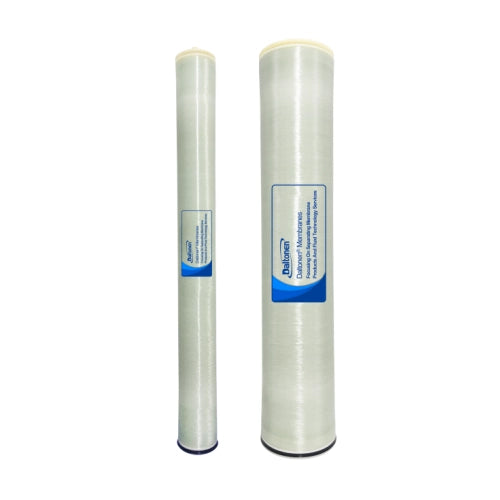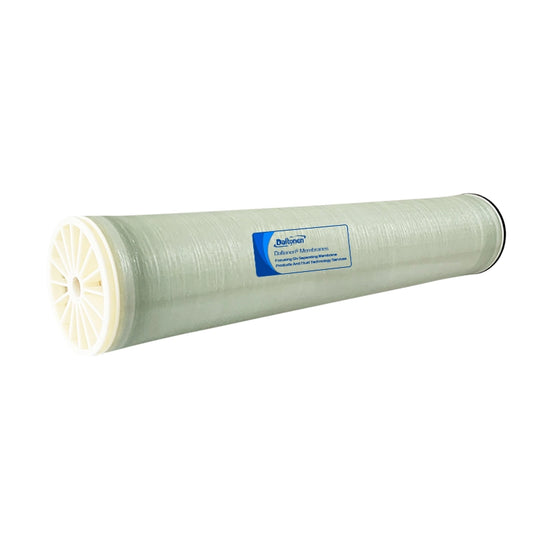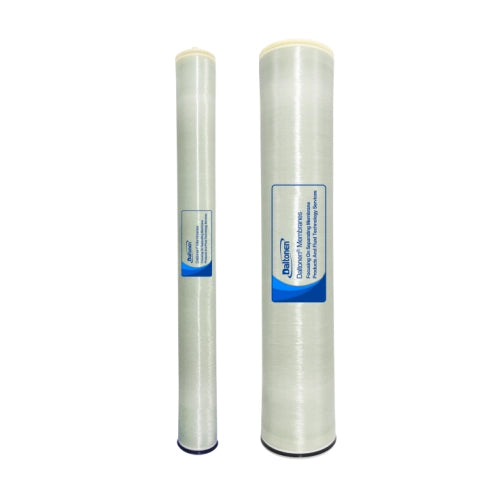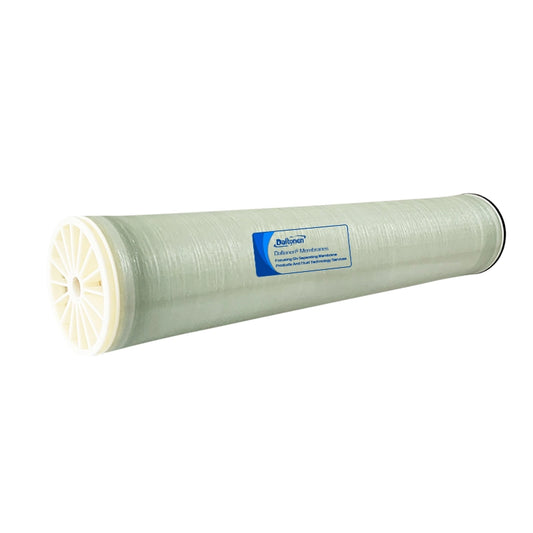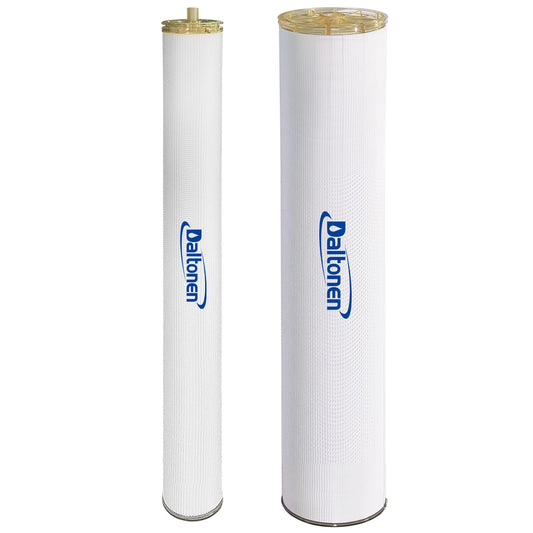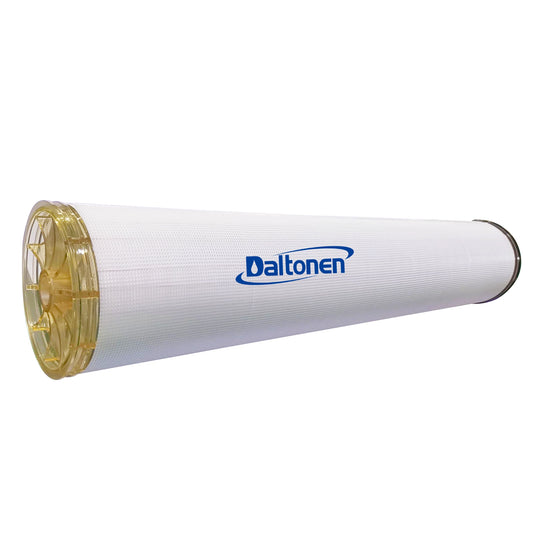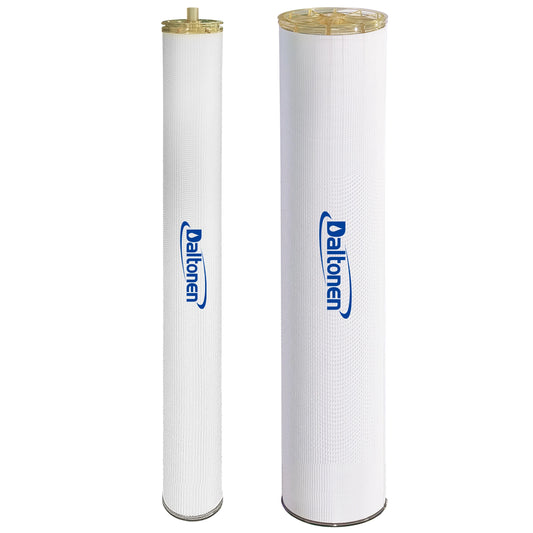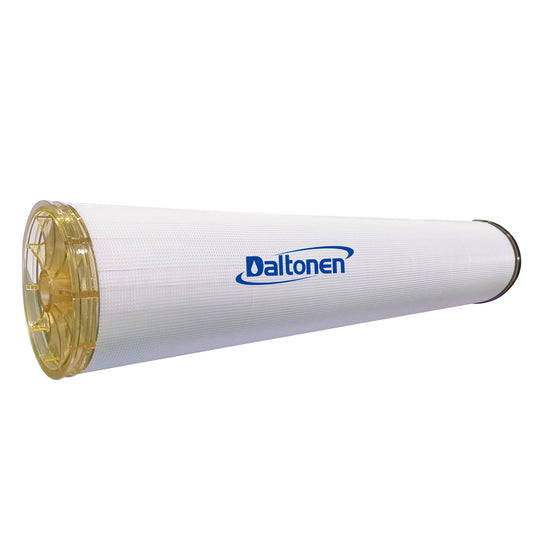The Role of Reverse Osmosis Membranes in Landfill Leachate Treatment
Landfill leachate is a challenging wastewater characterized by extremely complex composition, high pollutant concentrations, and high toxicity. Its key characteristics include:
-
High concentration of organic matter: Chemical Oxygen Demand (COD) typically ranges from thousands to tens of thousands mg/L, and can even reach hundreds of thousands mg/L.
-
High ammonia nitrogen: Ammonia nitrogen concentrations can be as high as several thousand mg/L.
-
High salinity: High Total Dissolved Solids (TDS) content and high conductivity.
-
Presence of heavy metals and toxic, hazardous, and persistent organic pollutants.
While conventional biological treatment processes (like Membrane Bioreactors - MBR) effectively remove most biodegradable organics and ammonia nitrogen, they often struggle to reduce COD, color, and salinity to meet stringent discharge standards (such as those in China's Standard for Pollution Control on Municipal Solid Waste Landfill GB 16889, or stricter local standards).

The role of the Reverse Osmosis (RO) membrane is critical here: serving as an advanced treatment step following biological treatment, its extremely small pore size (approximately 0.1 nanometers) allows it to efficiently remove substances that are difficult to eliminate biologically:
-
Persistent organic pollutants: Such as humic acids, fulvic acids, and other macromolecular organics, as well as some trace organic pollutants.
-
Inorganic salts: Including various anions (Cl⁻, SO₄²⁻) and cations (Na⁺, Ca²⁺, Mg²⁺, etc.).
-
Heavy metal ions: Such as lead, cadmium, chromium, etc.
-
Color and turbidity: The permeate (product water) is clear and transparent.
Through separation by the RO membrane, the final permeate quality is excellent, typically capable of meeting the most stringent discharge standards, and can even be directly reused for onsite purposes like irrigation or cleaning, moving towards "zero liquid discharge."
Position in the Treatment Train and Process Combinations
RO membranes are rarely used alone for leachate treatment. They are typically integrated at the end of a complete treatment train for final polishing. A classic "full-flow" treatment process is as follows:
Screening → Equalization Tank → Anaerobic Reactor → Membrane Bioreactor (MBR) → Reverse Osmosis System → Permeate Discharge/Reuse
-
Pretreatment (Screening/Equalization/Anaerobic): Removes large solids, equalizes quantity and quality, and degrades a significant portion of the high-concentration organics, reducing load on downstream processes.
-
Core Biological Treatment (MBR): Combines biological degradation and membrane separation to efficiently remove biodegradable COD and ammonia nitrogen, providing stable feed water conditions for the RO system. The effluent from the MBR is the feed water for the RO system.
-
Advanced Treatment (RO System): Acts as the final polishing step, ensuring final effluent quality reliably meets standards. It is the "safety net" for the entire system's output quality.
Technical Advantages
-
Thorough Treatment, Excellent Effluent Quality: Achieves removal rates of over 98% for both salts and COD, making it one of the most reliable technologies for meeting high discharge standards.
-
High Stability: Less affected by fluctuations in influent quality compared to biological processes. Provided upstream pretreatment (especially MBR) operates well, the RO system produces consistently high-quality permeate.
-
Modular Design, Relatively Small Footprint.
Challenges and Countermeasures
Applying RO membranes to landfill leachate presents significant challenges, primarily due to the leachate's characteristics:
-
Membrane Fouling and Scaling: The high concentration of organics, hardness, and salinity in leachate readily causes organic fouling, inorganic scaling, and biofouling on the membranes, leading to reduced flux, increased pressure drop, and frequent chemical cleaning requirements.
-
Countermeasures:
-
Robust Pretreatment: An efficient MBR system is crucial for stable RO operation, as it removes most substances that could foul the RO membranes.
-
Strict Feed Water Control: Monitoring and controlling parameters like Silt Density Index (SDI), residual chlorine, and pH.
-
Fouling-Resistant Membrane Elements: Using RO membranes specifically designed for challenging wastewater, featuring wider feed channels and more hydrophilic surfaces to resist fouling.
-
Optimized Cleaning Protocols: Establishing scientific chemical cleaning cycles and effective cleaning recipes.
-
-
-
Brine/Concentrate Management Challenge: This is the most critical and difficult issue associated with RO use in leachate treatment. The RO process produces a concentrate stream (20-30% of the feed flow) containing all the feed water contaminants in a more concentrated, often more toxic form. Management options include:
-
Recirculation to Landfill: A method used previously, but now often limited as it can lead to continuous buildup of salts and contaminants in the leachate, creating a vicious cycle.
-
Evaporation/Crystallization (Zero Liquid Discharge - ZLD): Currently the most reliable and thorough solution. RO brine is further concentrated and crystallized using evaporators (e.g., Mechanical Vapor Recompression - MVR), producing distillate (for reuse) and mixed salts (disposed as hazardous waste). However, capital and operational costs are extremely high.
-
Advanced Oxidation Processes (AOPs): Can be used to degrade persistent organics in the brine, but costs are high and complete treatment is challenging.
-
Case Study: A Large Domestic Municipal Solid Waste Landfill Leachate Treatment Project
-
Process Train: Coagulation/Sedimentation + UASB Anaerobic Reactor + External MBR (Ultrafiltration) + Two-Stage Reverse Osmosis (STRO + HPRO) + MVR Evaporator.
-
RO's Role: The primary Spiral Tubular RO (STRO) and secondary High-Pressure RO (HPRO) provided advanced treatment of the MBR effluent, ensuring the permeate met discharge standards.
-
Brine Management: The RO concentrate was sent to the MVR evaporator for final treatment, achieving zero liquid discharge, with crystalline salts transported for off-site disposal. This combined process ensures stable operation under strict environmental requirements.
Conclusion
In summary, Reverse Osmosis membranes are an indispensable advanced purification and safety assurance technology in landfill leachate treatment. Their exceptional separation performance ensures the final effluent meets increasingly stringent environmental standards. However, their successful application heavily depends on a robust pretreatment system to mitigate fouling and must be coupled with a reliable brine management strategy (particularly evaporation/crystallation) to address the final waste stream. Opting for RO technology signifies choosing a high-treatment-standard pathway that is reliable but comes with significant associated costs.
